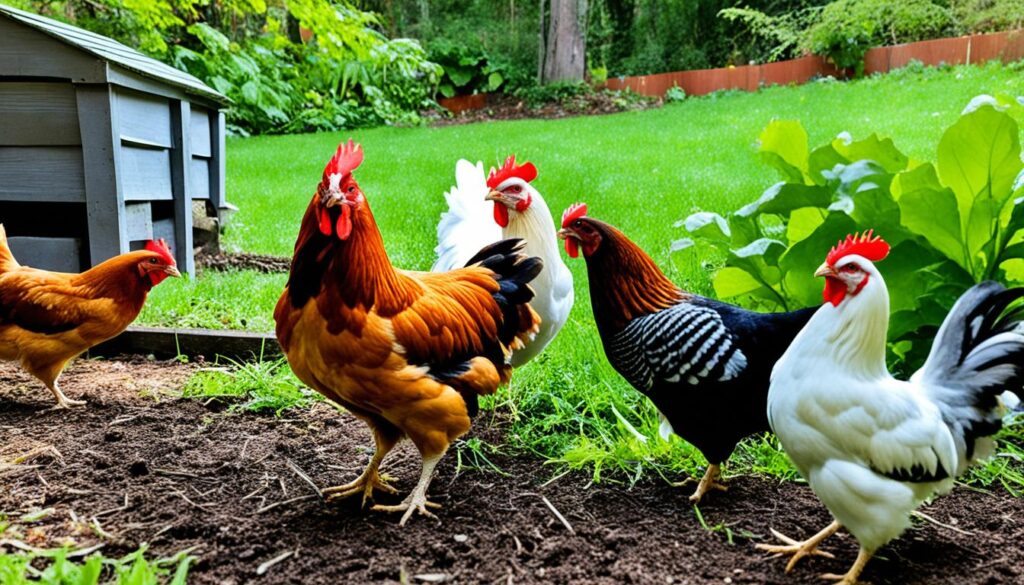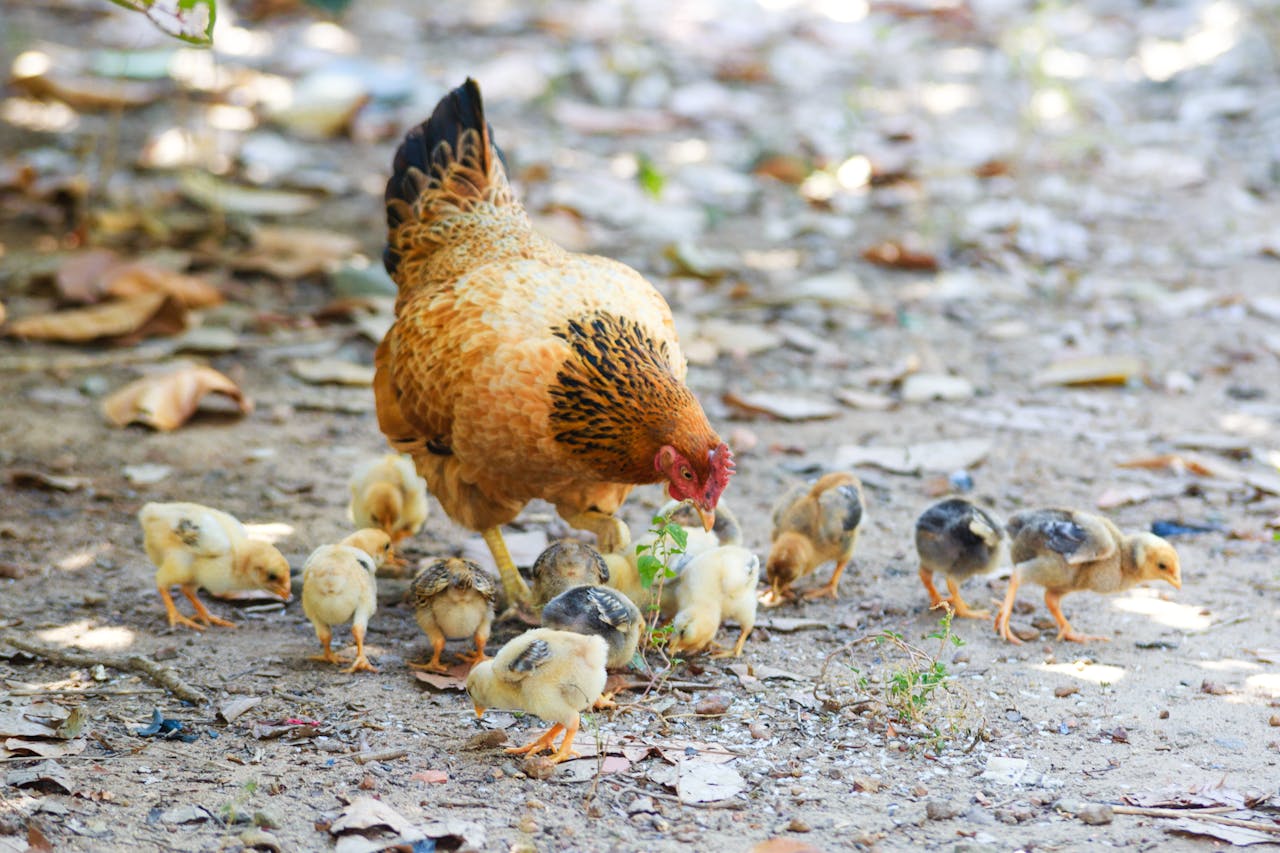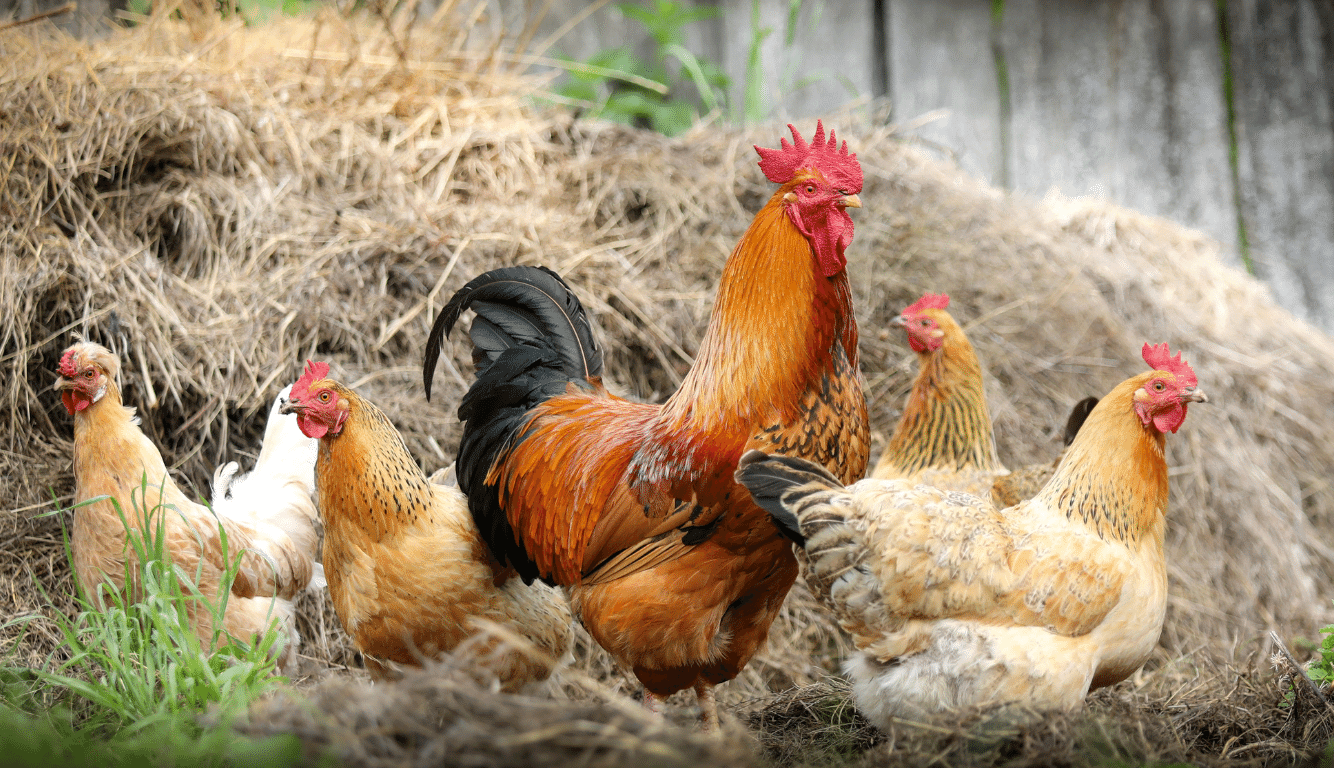Welcome to my blog post about creating harmony between cats and chickens in your backyard. If you’re a pet lover like me, you may be interested in exploring the possibility of having both feline friends and backyard poultry. While it may seem like an unusual combination, with the right training and supervision, cats and chickens can coexist peacefully and provide you with the joy of raising animals and fostering unique animal companionship.
Cat behavior may naturally include predatory instincts, which can concern owners who also raise chickens. However, by taking the time to properly introduce and train your cats, you can create a safe and harmonious environment for both your feathered friends and your feline companions. It’s all about understanding their behavior, providing appropriate chicken coops and enclosures, and ensuring diligent pet care.
In this article, I will share some insights and tips on gradually introducing cats to chickens, training them to coexist peacefully, and even how cats can get along with other household pets. By applying these strategies and approaches, you can create a harmonious backyard where your cats and chickens thrive together.
Key Takeaways:
- Cats and chickens can coexist harmoniously with the right training and supervision.
- Gradual introductions and positive reinforcement are key to helping cats and chickens become comfortable with each other’s presence.
- Training cats to live with chickens requires patience and individualization based on their behavior and comfort levels.
- Cats can also live harmoniously with other household pets, such as dogs, rabbits, ducks, and barnyard animals.
- Catios, enclosed outdoor spaces, promote outdoor enjoyment for cats while protecting backyard wildlife.
Introducing Cats and Chickens
When it comes to introducing cats to chickens, taking a gradual approach is key. By starting with small steps, you can ensure a positive interaction between the two. Here are some steps to guide you in introducing your cat to chickens:
- Allow observation: Begin by providing a safe barrier, such as a wire mesh fence, that allows the cat and chickens to observe each other without direct contact. This gives the cat an opportunity to become familiar with the sight, sounds, and smells of the chickens.
- Face-to-face introductions: Once the cat seems comfortable with the presence of the chickens, you can move on to face-to-face introductions. However, it’s important to exercise caution and supervise these initial encounters to ensure the safety of both animals.
- Positive reinforcement: During the introductions, reward your cat for calm and non-aggressive behavior, using treats or praise to reinforce positive interactions. This will help the cat associate the presence of the chickens with pleasant experiences.
- Continued reinforcement: Over time, continue to reinforce positive interactions between your cat and chickens. Gradually increase the duration and proximity of their interactions, always observing your cat’s behavior and comfort level.
Remember, each cat is unique, and the timeline for introducing them to chickens may vary. Patience, consistency, and positive reinforcement are essential in helping your cat adjust to their feathered friends.
By following these steps and providing a safe and gradual introduction, you can increase the likelihood of a harmonious relationship between your cat and chickens.
Understanding Cat Behavior
Before introducing your cat to chickens, it’s important to have a basic understanding of feline behavior. Cats are natural predators and may exhibit hunting instincts when encountering small animals like chickens. However, through proper training and positive reinforcement, you can help your cat overcome these instincts and coexist peacefully with your feathered friends.
Supervision and Safety
Throughout the introduction process, it’s crucial to provide constant supervision and ensure the safety of both your cat and chickens. Never leave them unattended until you are confident in their ability to peacefully coexist. This will help prevent any potential harm to either animal.
Training Cats and Chickens
Training cats to live with chickens requires patience and supervision. Positive reinforcement techniques, such as rewards and praise, can be used to reinforce desired behaviors and discourage predatory instincts.
When first introducing cats to chickens, it is important to observe the cat’s behavior and adjust the training timeline based on their individual reactions and comfort levels. Each cat is unique, and some may take longer to adapt to the presence of chickens.
Older cats may adapt more easily to the presence of chickens, while younger cats may require more training and patience. It is crucial to provide adequate supervision during training sessions to ensure the safety of both the cat and the chickens.
By consistently using positive reinforcement, cats can learn to associate the presence of chickens with positive experiences. Offering treats and praise when the cat displays calm and non-aggressive behavior around the chickens can help them form a positive association.
Gradually increasing the cat’s exposure to the chickens and providing supervised face-to-face interactions can help them become comfortable with each other. With time and consistent training, cats and chickens can develop a harmonious relationship, allowing them to peacefully coexist in the backyard.
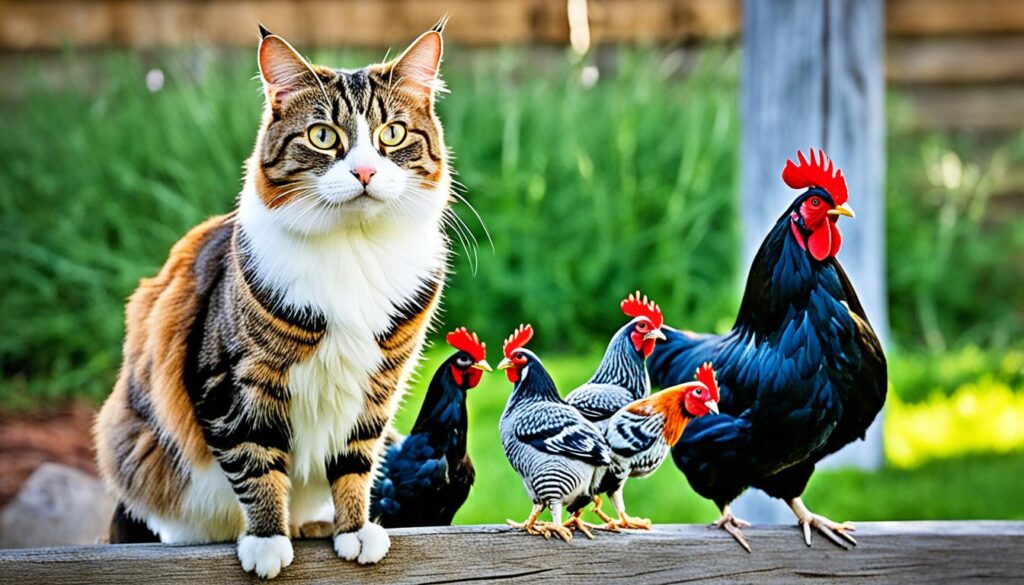
Key Training Considerations
- Patience: It’s important to be patient when training cats to live with chickens, as they may require different amounts of time to adjust.
- Supervision: Always closely supervise interactions between cats and chickens to ensure the safety and well-being of both animals.
- Positive Reinforcement: Use rewards and praise to reinforce desired behaviors and discourage predatory instincts in cats.
“Training cats to live with chickens is a process that requires time, dedication, and a focus on positive reinforcement. With patience and consistent training, cats can learn to peacefully coexist with their feathered companions.”
Cats and Other Household Pets
Cats are incredibly adaptable and can form strong bonds with various types of pets, making them a versatile addition to multi-pet households. Whether it’s dogs, rabbits, ducks, or barnyard animals, cats can coexist harmoniously when introduced properly. Similar training techniques used for introducing cats to chickens can be applied in these situations, focusing on gradual introductions and positive reinforcement.
“It’s important to consider the individual personalities and behaviors of both the cat and the other animal when introducing them”, says Dr. Sarah Thompson, a veterinarian with a specialization in animal behavior. “By understanding their unique traits and providing a controlled environment, you can facilitate a smooth and peaceful transition.”
Cats and dogs, in particular, can learn to coexist and even become protectors of backyard chickens. As the cat becomes familiar with the presence of chickens, they may naturally assume a guardian role, keeping predators at bay. However, it’s crucial to supervise these interactions to ensure the safety of all animals involved.
When it comes to introducing cats to rabbits, caution and supervision are key. Rabbits are prey animals, and cats have predatory instincts, making a controlled environment essential during their initial meetings. Gradual introductions through visual barriers and scent swapping can help them acclimate to each other’s presence.
Another unique combination is cats and ducks. Cats may be curious about the ducks, but it’s essential to ensure that playfulness doesn’t turn into aggression. Supervision is vital during their interactions, especially if the ducks are smaller in size. With proper guidance and positive reinforcement, cats and ducks can learn to coexist peacefully.
Similarly, cats can live alongside barnyard animals such as goats, sheep, or even horses. Introducing them gradually and providing suitable enclosures can help foster positive relationships. These interactions can offer ample opportunities for sensory enrichment and companionship for both the cat and the barnyard animals.
“Just like any multi-pet household, introducing cats to other animals requires patience, supervision, and a positive environment,” emphasizes Dr. Thompson. “With time, most cats can form strong bonds and enrich the lives of both the humans and the animals around them.”
Benefits of Cats Living with Other Household Pets
Living in a multi-pet household offers numerous benefits for cats and their animal companions. Some advantages include:
- Companionship: Cats can develop strong bonds with other pets, providing them with companionship and reducing loneliness.
- Behavioral Enrichment: Interactions with different species can offer sensory stimulation and promote mental and physical well-being for cats.
- Learning Opportunities: Cats can learn valuable social and communication skills when living alongside other animals.
- Reduced Stress: Having other pets around can alleviate stress and anxiety for cats, promoting a more relaxed and contented lifestyle.
- Entertainment: Cats and other animals can provide each other with endless entertainment and play opportunities.
By carefully introducing cats to dogs, rabbits, ducks, and other barnyard animals, pet owners can create a harmonious and fulfilling environment for all their beloved furry and feathered friends.
| Animals | Training Tips |
|---|---|
| Cats and Dogs | Start with supervised introductions and gradually increase the time spent together. Provide individual spaces and positive reinforcement for calm behavior. |
| Cats and Rabbits | Begin with separate enclosures and allow them to become familiar with each other’s scent. Progress to controlled face-to-face interactions under supervision. |
| Cats and Ducks | Ensure a safe and controlled environment. Supervise their interactions closely and avoid leaving them alone together until trust is established. |
| Cats and Barnyard Animals | Introduce them gradually and provide appropriate enclosures for both the cat and the barnyard animals. Monitor their interactions and ensure each animal’s safety. |
Learn more about adopting and caring for backyard chickens to ensure the well-being of all your beloved pets.
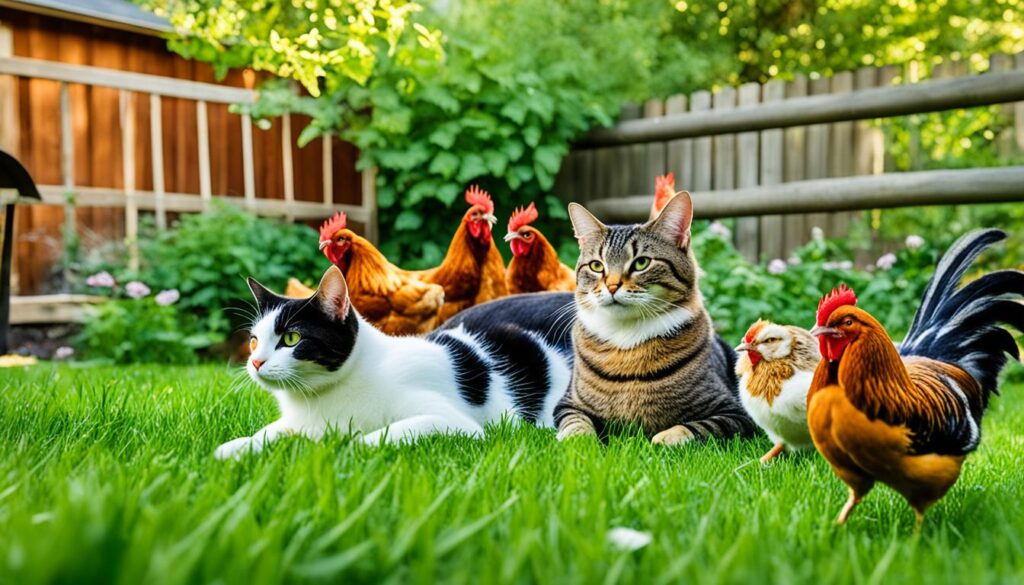
Conclusion
Catios, enclosed outdoor patios for cats, provide a safe space for cats to enjoy the outdoors while protecting backyard wildlife from their predatory behavior. The concept of catios has gained popularity in Portland and other cities as a solution to the issue of cats killing birds. The catios not only protect birds but **also** allow cats to spend time outside safely. The popularity of catios has grown, with more people building them for their cats and participating in catio tours.
Catios can also be used to transition stray cats to a new home and can be adapted for other pets like rabbits and small barnyard animals. With the rise of cat and bird advocacy, catios have become an important tool in controlling predatory behavior and safeguarding the well-being of both cats and wildlife. These outdoor enclosures not only provide cats with mental stimulation and exposure to natural elements but also maintain the delicate balance of our ecosystems by reducing the impact of cats on local bird populations.
As we continue to advocate for responsible pet ownership, it is crucial to recognize the importance of protecting backyard wildlife. Catios offer a practical solution that allows cats to engage in their natural instincts while keeping other animals safe. By embracing catios as an integral part of our pet care routine, we can ensure a harmonious coexistence between our feline friends and the diverse wildlife that calls our backyards home.

